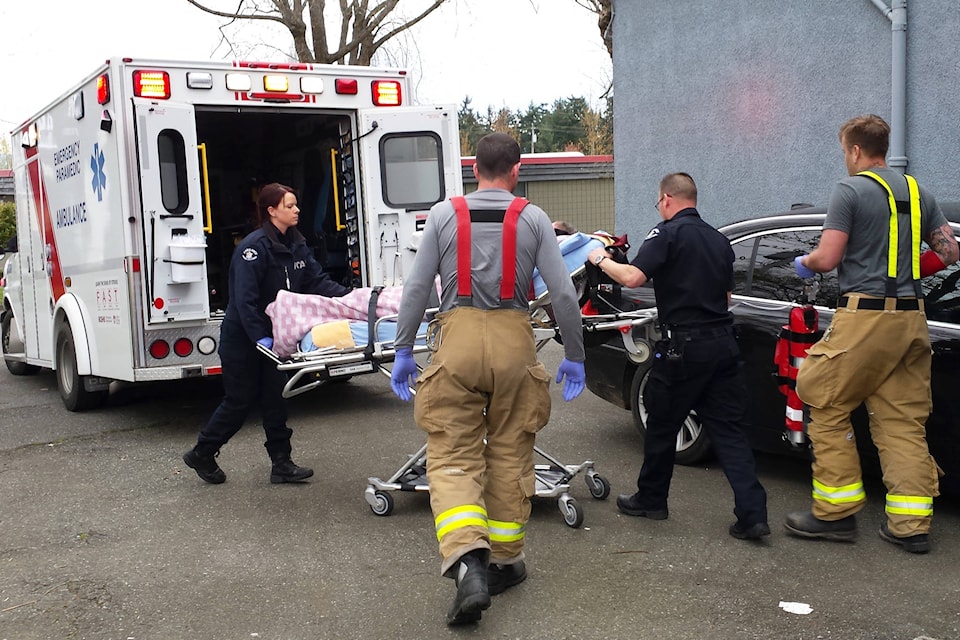A partnership between the City of Surrey and Statistics Canada that is being described as “reverse engineering” of overdose victims has shed new light on who is dying amid the ongoing opioid epidemic that took more than 1,400 lives in B.C. last year.
Roughly two-thirds of those who died in B.C. between 2011 and 2016 didn’t have recent contact with police, according to the data analysis, released by Stats Can on Nov. 13. That stood true province-wide (66 per cent) and Surrey specifically (64 per cent).
“The most common job for these individuals was the construction industry,” noted Surrey Fire Chief Len Garis, who is part of the project.
While the data revealed only about 10 per cent of B.C.’s population works in the construction industry, they made up 23 per cent of Surrey’s fatal overdose victims, and 21 per cent, B.C.-wide.
“It’s way over-represented,” Garis noted.
The data analysis also found that three-quarters (77 per cent) of fatal overdose victims were men aged 25 to 54.
Garis found it interesting that the majority of fatal overdose victims in B.C. had no recent contact with police, noting it breaks the stereotype that people who are street entrenched are the ones dying.
“And 74 per cent of individuals (that died) were never hospitalized, and 59 per cent of them never visited an emergency room,” he added.
See also: Surrey overdose death toll jumps to 174 in 2017
See also: B.C. on track to record same number of overdose deaths as last year (Nov. 14, 2018)
Garis said the preliminary data shows that Surrey has proportionally the same characteristics for opioid overdoes as the rest of the province.
But the data analysis is far from done, he added.
“We knew quite a bit about when and where overdoses are occurring, but we didn’t know the who and the why. That’s what this project does,” said Garis.
“It’s the beginning of a bigger and deeper analysis that will occur going forward,” he added. “In the next few months, this analysis will include the survivors…. That will help us start to understand the trajectory. Then we link them to employment, justice, hospitalization, and we’ll have a greater understanding of what happened to them. The end game is to get to the beginning of it. We’re trying to reverse engineer individuals that have either died, or are overdosing multiples times, trying to figure out where, in terms of survivors, where we can reach out to these individuals in these situations and provide some meaningful policy and programming.
He described the project as “a social demography or experiment, of peeling the layers off the onion to understand what the root causes are, to become more precise.”
The next step, said Garis, will be to bring stakeholders together later this year or early 2019 to “start taking what we learned from the reverse engineering of people who have died or are overdosing… to see how we can support a change in the way we’re treating these situations,” via policy and programming.
Garis said so far in 2018, the “unofficial” number of fatal overdoses in Surrey is 133, and based on that rate, it’s estimated Surrey will have 159 deaths by year’s end, which would be a decrease from the number of 2017 deaths.
According to data released by the B.C. Coroners Service last January, 174 people died of drug overdose in Surrey last year.
That was up from 122 drug overdose deaths in Surrey in 2016, and 76 in 2015.
“The who and the why is really important, it’s such a daunting task, when we say things like 81 per cent of people that died in Surrey died in their homes – not on the street,” said Garis.
Other agencies participating in the data analysis project with Surrey and Stats Can include the B.C. Coroners Service, Surrey RCMP, Fraser Health, B.C.’s Centre for Disease Control, the Ministry of Health and Public Safety Canada.
amy.reid@surreynowleader.com
Like us on Facebook Follow us on Instagram and follow Amy on Twitter
